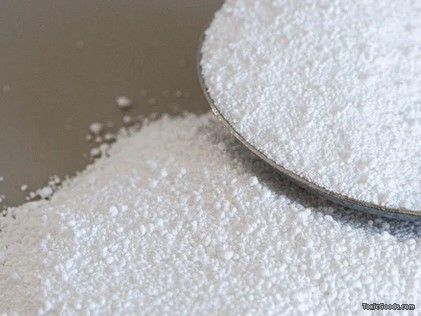Sodium Percarbonate: Uses and Toxicity
You’ve probably seen sodium percarbonate in cleaning products, laundry boosters, or even eco-friendly stain removers. Marketed as a “green” alternative to chlorine bleach, this powdery substance packs a punch when it comes to cleaning power. But what happens when it gets into your body—or worse, your bloodstream? Let’s break down where it’s used, how it affects humans and living organisms, and the unsettling ways it can sneak past your skin and wreak havoc on your lymphatic system.
Where Is Sodium Percarbonate Used?
This chemical is everywhere—laundry detergents (like OxiClean), household disinfectants, and even some toothpaste formulas. Farmers use it to sanitize equipment, and aquarium owners rely on it to kill algae. Its magic lies in its ability to break down into hydrogen peroxide and soda ash, making it a powerful oxidizer that lifts stains and kills germs. But that same reactivity raises red flags when it comes to toxicity.
What Happens If It Gets Into Your Body?
 Swallowing sodium percarbonate is a bad idea. It releases hydrogen peroxide inside your stomach, leading to nausea, burns, and even perforation in severe cases. Skin contact? It can cause irritation, especially if you’re working with concentrated solutions. But the real concern is long-term exposure—especially if it gets absorbed through your scalp or damaged skin.
Swallowing sodium percarbonate is a bad idea. It releases hydrogen peroxide inside your stomach, leading to nausea, burns, and even perforation in severe cases. Skin contact? It can cause irritation, especially if you’re working with concentrated solutions. But the real concern is long-term exposure—especially if it gets absorbed through your scalp or damaged skin.
Studies suggest that chemicals like hydrogen peroxide can penetrate the scalp, enter the bloodstream, and trigger oxidative stress in cells. Over time, this may damage the lymphatic system, which is crucial for immune function. While research on sodium percarbonate specifically is limited, we know that chronic peroxide exposure disrupts cellular repair mechanisms, potentially leading to inflammation and DNA damage.
The Hidden Risk: Inhalation Dangers
Most people don’t think about breathing in laundry fumes, but here’s the scary part—acute inhalational exposure to certain cleaning chemicals can cause serious lung injuries. While sodium percarbonate isn’t as immediately dangerous as chlorine gas (which forms when bleach mixes with other cleaners), it still releases oxygen and peroxide vapors, especially in hot water.
In sensitive individuals—particularly those with asthma or COPD—these vapors can trigger severe bronchospasm, chemical pneumonitis, or even acute respiratory distress syndrome (ARDS). Early symptoms might include coughing, wheezing, or shortness of breath, sometimes before a chest X-ray shows any damage. In extreme cases, prolonged exposure to high concentrations could mimic the effects of hydrogen peroxide gas inhalation, leading to lung inflammation and fluid buildup.
How It Affects Other Living Organisms
In the environment, sodium percarbonate breaks down into oxygen, water, and soda ash—sounds harmless, right? Not always. In high concentrations, it can harm aquatic life, killing fish and microorganisms by overwhelming their systems with oxygen radicals. Soil bacteria can also take a hit, disrupting natural ecosystems.
Chemical Properties and Toxicity at a Glance
| Property | Details |
|---|---|
| Chemical Formula | Na₂CO₃·1.5H₂O₂ |
| Appearance | White crystalline powder |
| Solubility | Highly soluble in water |
| Primary Toxicity Risks | Skin/eye irritation, gastrointestinal burns, possible lymphatic disruption |
| Inhalation Risk | May worsen asthma/COPD; linked to chemical pneumonitis in extreme cases |
| Environmental Impact | Low toxicity when diluted, harmful in high concentrations |
References and Sources
- National Center for Biotechnology Information (NCBI) – A deep dive into hydrogen peroxide toxicity and cellular damage.
https://www.ncbi.nlm.nih.gov/pmc/articles/PMC3943521/ - Agency for Toxic Substances and Disease Registry (ATSDR) – Guidelines on peroxide-based compound exposure.
https://www.atsdr.cdc.gov/ - Environmental Protection Agency (EPA) – Ecological impact of oxidizing agents.
https://www.epa.gov/ - American Journal of Emergency Medicine – Case studies on inhalational injuries from household chemicals.
https://www.ajemjournal.com/
